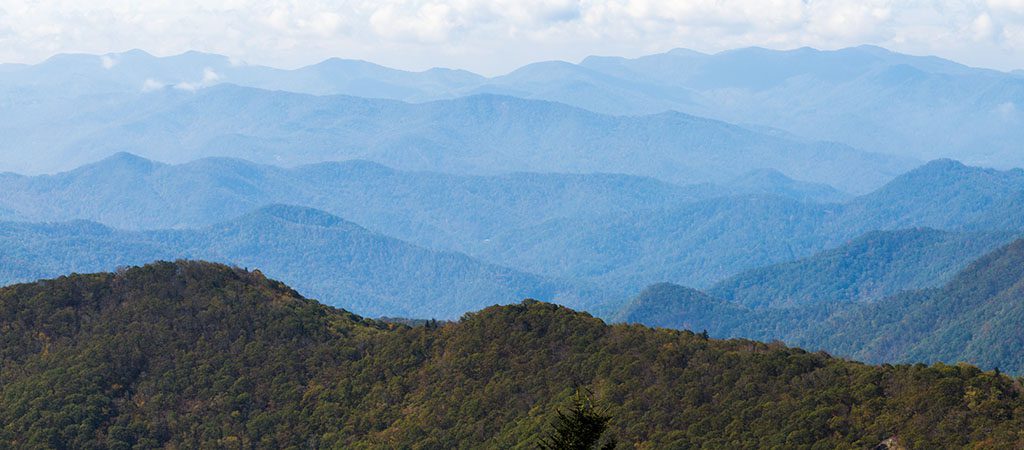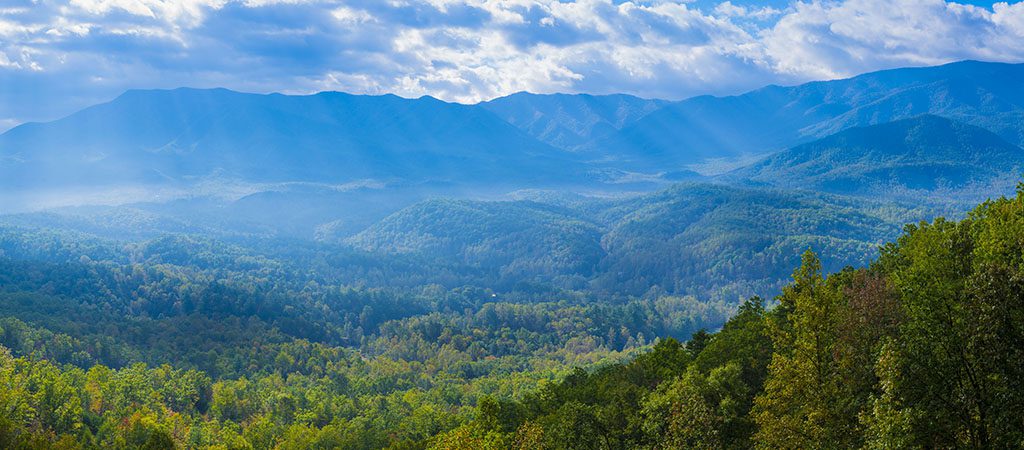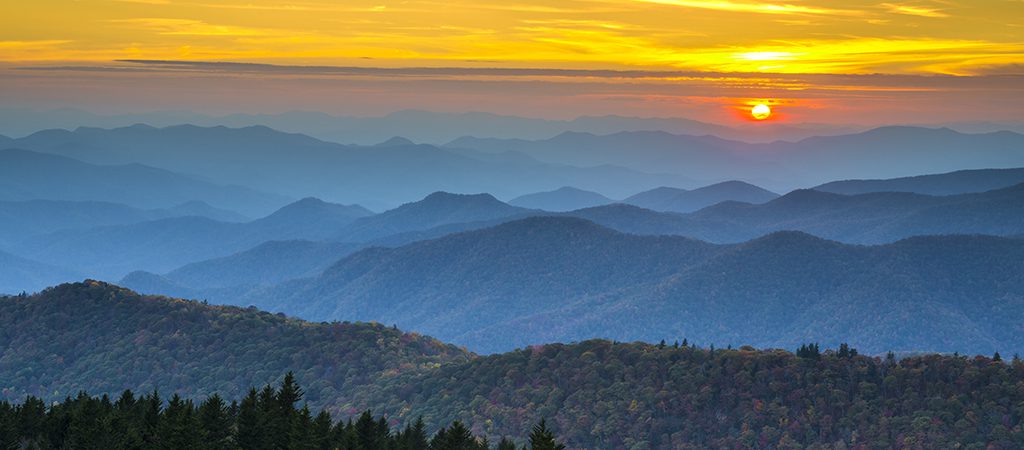Hiking trails leading to cascading waterfalls, horseback rides exploring the towering forests, gorgeous wildlife meandering lush valleys…the Blue Ridge Mountains have a lot to offer visitors to North Georgia. Attracting millions of people each year, it’s a popular travel destination for outdoor enthusiasts. Along with the wonder and beauty these mountains contain is a burning question many ask when they see and hear the name Blue Ridge Mountains. Why are the Blue Ridge Mountains blue? Today, let’s dip our toes into science and finally find out!
Quick answer: the Blue Ridge Mountains are perceived as shades of blue due to a common chemical released by the native trees that scatters blue light from the sun.
Brief on Blue Ridge
As a subrange of the Appalachian Mountains, the Blue Ridge Mountains actually span 8 states — Pennsylvania, Maryland, Virginia, West Virginia, Tennessee, Nort Carolina, South Carolina, and good ole Georgia! The Blue Ridge province has some of the highest mountains in eastern North America. Brasstown Bald is the highest peak along the Blue Ridge in Georgia at 4,784 feet above sea level (you can see 4 states from the top!), and Mount Mitchell in North Carolina is the highest point along the Blue Ridge at 6,684 feet.
You can travel along the Blue Ridge Parkway for an extensive look across 469 miles that connect the Great Smoky Mountains National Park and the Shenandoah National Park. Or just pop over to Blue Ridge in North Georgia, hike in the Chattahoochee-Oconee National Forest, splash at Lake Blue Ridge, and enjoy breathtaking Blue Ridge Mountain views at local vineyards, outdoor attractions, or your cabin rental.
Science Behind the Blue
Dubbed Sa-koh-na-gas, which roughly translates to blue, by the original Cherokee, the Blue Ridge Mountain range definitely appears blue to most. But why? To understand the magic behind blue, first look at all the green.

Natural Isoprene
Expert Jonathon Horton, associate professor of biology at the University of North Carolina at Asheville, wields a doctorate in forestry and specializes in plant physiology. He notes many of the native trees produce a type of volatile hydrocarbon (science speak for a quickly evaporating compound) called isoprene.
Commonly released by trees as a means of protection against excessive heat and/or insects, isoprene is a natural pollutant. It’s especially useful for trees exposed to our North Georgia heat waves in summer! When isoprene interacts with ozone molecules in the air, you get that classic blue haze hovering around the Blue Ridge Mountains.
Sunlight & Color Perception
Diving further into why the Blue Ridge Mountains are blue, it’s important to note how the human eye perceives colors in the natural world. We know the mountains themselves aren’t actually blue; the chemical compound in the air around the mountains casts blue. But again, we ask ourselves why…
Sunlight will show us the way — and the reason why we see the Blue Ridge Mountains as turquoise, cerulean, powder blue, indigo, sapphire, and a range of many other blues within the haze. In a nutshell, light from the sun combines all the colors of the rainbow. As the rays from the sun travel to Earth, the colors disperse.
Our eyes can pick up a range of colors within certain wavelengths. Each color has a different wavelength. Blues have much shorter and smaller wavelengths that happen to be easier for our eyes to detect. So, the Blue Ridge Mountains appear blue from a distance to the human eye because the haze scatters light from the sun — and our eyes pick up those beautiful blue waves!
Unique to the Blue Ridge Mountains
Okay, if the trees, ozone molecules, sunlight, and color wavelengths are creating the blue vistas we all know and love…then why aren’t more mountain ranges blue? Glad you asked!
Isoprene (that natural chemical we talked about earlier) is produced by many trees around the world. However, the amount released is particularly increased by coniferous trees — aka trees with needles and cones. Oak trees dominate the Blue Ridge range, and they just so happen to be coniferous.
In other words, the Blue Ridge Mountains are blue in comparison to other mountain ranges in the world because there are a lot of coniferous oak trees thriving in our mountain forests that love to produce isoprene and trigger that attractive blue haze.

View the Blue
Whew! That should cover it. Now that you know why the Blue Ridge Mountains of North Georgia are blue, come see the delightful hazy hues for yourself. After all, Blue Ridge, GA, is named so for a reason! And there are plenty of outdoor activities to immerse yourself in nature and find the best mountain views.
- Explore the Chattahoochee National Forest.
- Stop by a wine vineyard tucked away in a valley.
- Swim, kayak, and fish at Lake Blue Ridge.
- Take a scenic drive through the mountains.
- Go apple picking with the whole family.
- Hike the beginning of the Appalachian Trail.
- Soak in a hot tub with mesmerizing views at your cabin rental.
Book a cozy Blue Ridge, GA, cabin to experience the charming mountain life and check out our beloved Blue Ridge Mountains.






